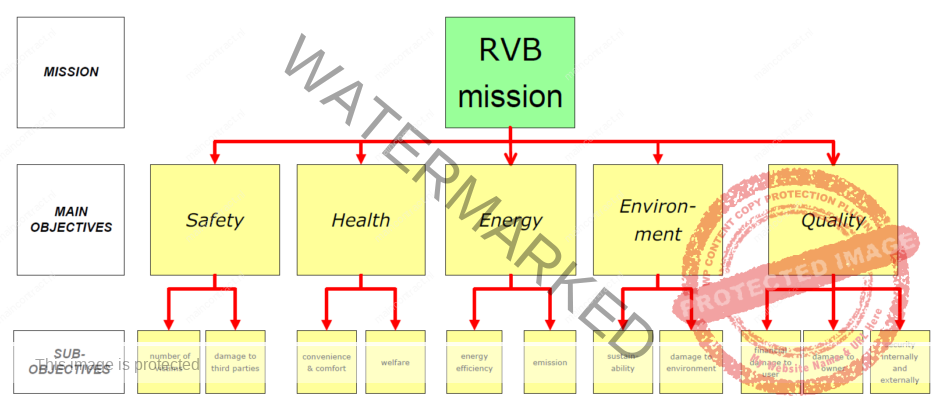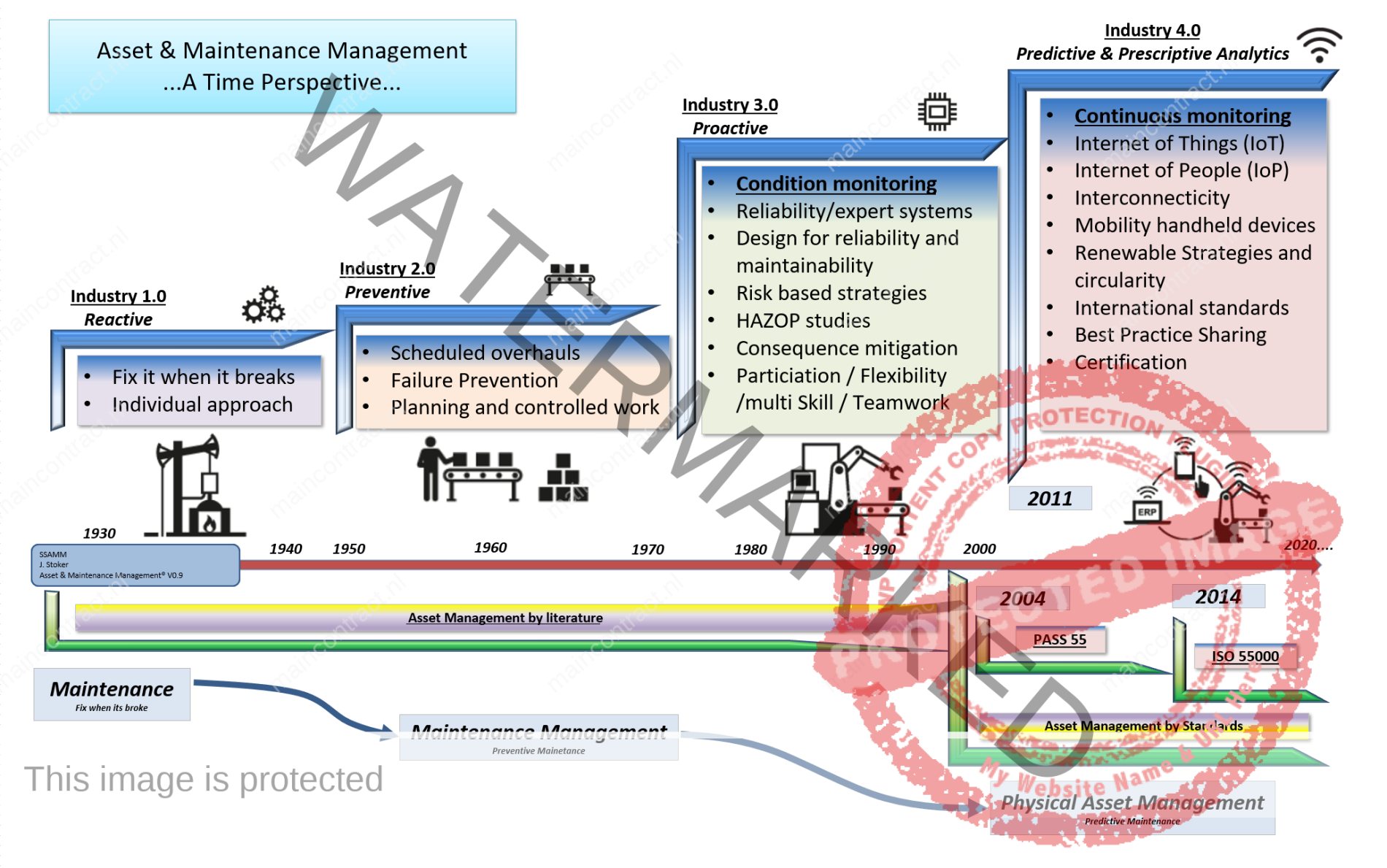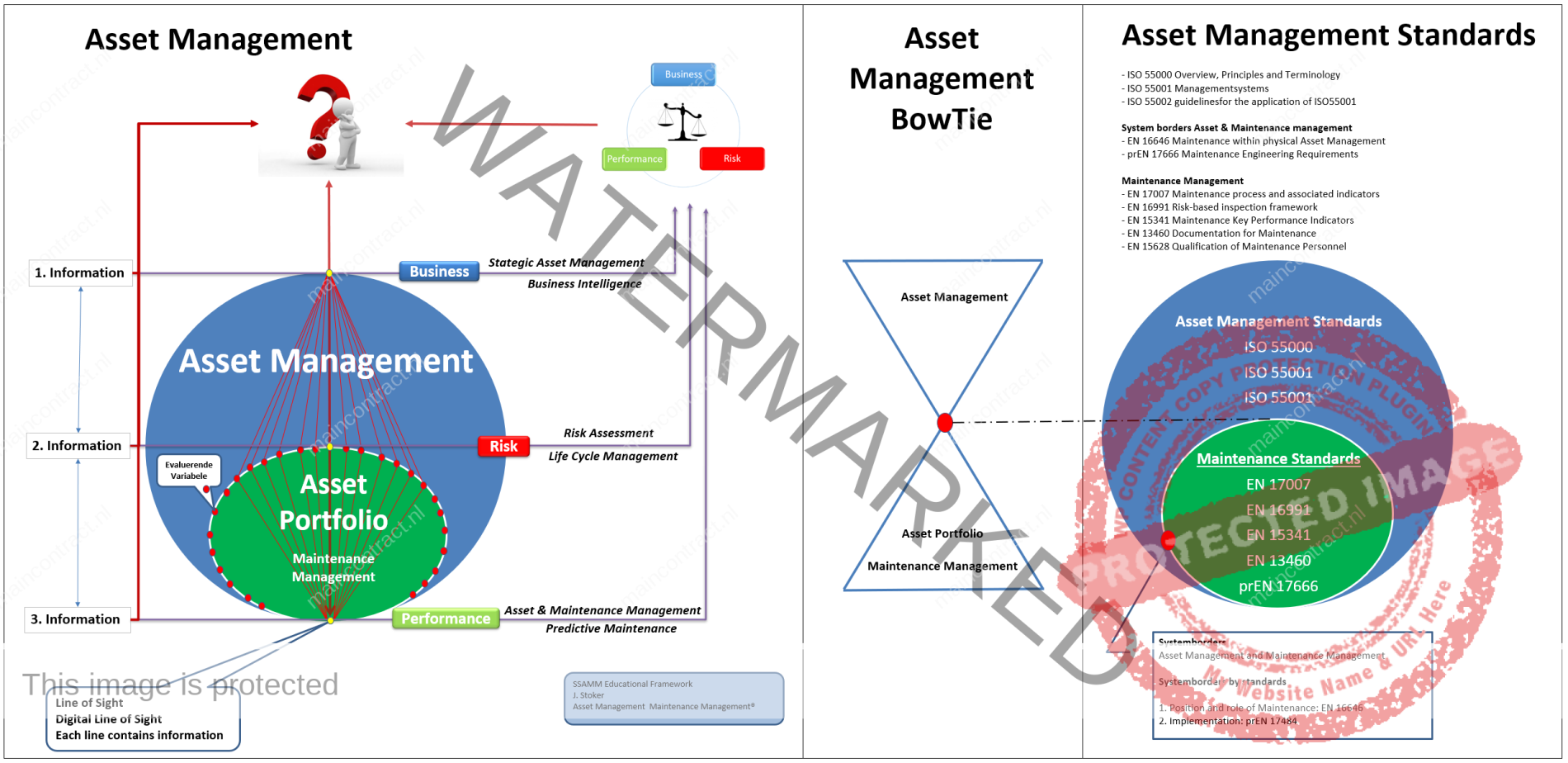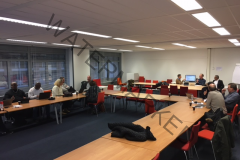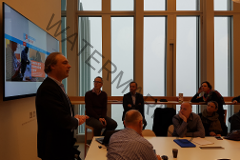- Publicatie 24 April 2022
![]()
The Dutch Government Real Estate Agency (RVB, Rijks Vastgoed Bedrijf) is one of the largest corporate real estate managers in The Netherlands being responsible for approximately 2000 government buildings and terrain of the Ministry of Defence ; from approximately 350 monuments to buildings of various types like palaces, museums, offices, penitentiary institutions, bunkers, shelters, airfields and harbours, in total some 12 million gross square meter floor space. The annual maintenance budget is in the order of some 200Mlj€. Daily maintenance is managed via 5-7 year service level agreements; investments and refurbishments are planned over a five year interval.
Every five years the condition of building elements are established by a team of inspectors, using the Dutch NEN2767 condition assessment norm. A building advisor then has to integrate this information in a budget proposal in order to cost effectively maintain the overall real estate condition in line with the mission of the RVB. To this end we developed a decision support tool (prototype in Excel) in which the RVB management experts link the building elements to
one or more of the mission categories (safety, health, energy, environment and quality, SHEEQ). The inspection results are registered under these headings and are weighted via the Analytical Hierarchy Process with respect to the RVB mission. The advisor, in this way, easily obtains a ranked list of potential refurbishment candidates. He / she then will allocate budget, first for obligatory, then for the most critical actions in descending order on single building elements until the budget limit is reached. In a third round a cost-optimal combination of activities on the top-ranked total set of building elements will be sought and offered as an advice to the building owner. The latter may extend the analysis over the portfolio of similar buildings to achieve a company-wide optimal 5-year budget plan.
The technique has been successfully field-tested, is regarded as an efficient decision support tool both by the RVB and by building maintenance companies facing the introduction of long-term service level agreements (main-contracting) and is taught in certification courses for building advisors. It will be implemented in CONDOR, a commercial building management system.
![]()
Author: Cyp van Rijn
Paper presented at 46th ESReDA Seminar on Reliability Assessment and Life Cycle Analysis of Structures and Infrastructures (May 29th – 30th, 2014) Politecnico di Torino, Turino, Italy
The Dutch Government Real Estate Agency (RVB) is one of the largest real estate managers in The Netherlands. The agency is responsible for approximately 2000 government buildings and terrain of the Ministry of Defence ; from approximately 350 monuments to buildings of various types like palaces, museums, offices, penitentiary institutions, bunkers, shelters, airfields and harbours, in total some 12 million gross square meter floor space. The annual maintenance budget is in the order of some 200 million €. Daily maintenance is managed via a large number of a.o. 5-7 year service level agreements via a standard specifications and conditions. Larger activities like replacement of building parts or installations are managed via a rolling 5 year planning forecast.
Like most countries, the Netherlands has legal requirements on fire safety, health, energy consumption environmental aspects and quality (SHEEQ) of different types of buildings as laid down in the Building Regulation (Bouwbesluit). The RVB introduced in 2009 the BOEI concept; every five years teams of certified inspectors are hired-in to evaluate the condition of building elements according
![]()
Click to enlarge: Asset & Maintenanec Management-A time perspective by Jan Stoker
to the Dutch standard NEN 2767 on these legal aspects (B= “brand” -> Dutch for fire, O= “onderhoud”-> Dutch for maintenance, E= energy, I= information on laws and regulations) on basis of a standard inventory of building elements. The Dutch norm NTA 8026 offers the required methodology for the link between physical asset management and these condition measurements. A hired-in building advisor subsequentially uses these inspection reports to formulate a budget proposal (integral advice report) in order to cost effectively maintain the overall real estate condition in line with the mission of the RVB.
As the figure suggests we are dealing here with a very lean organization of asset owner and clients that has to rely on a large number of market parties that not only are responsible for carrying out the daily maintenance and renovation activities but also provide all the required management information on condition of building elements and scenario’s for planning.In the past, the RVB had difficulties in forecasting a required budget for major maintenance / refurbishment / retrofitting as well as the risks of not meeting required building standards. An integral decision support tool for building management was required.
![]()
The recently published standard EN 17485 introduces methods and procedures about maintenance within physical asset management for all the levels and functions of the organizations’ management, including corporate planning management, plant management, technical management, production management, financial management, asset management, maintenance management, and quality management. Further and maybe even greater benefits are now being found through improved credibility in the eyes of customers, regulators and other stakeholders.
Click to enlarge
Physical asset management also results in much greater engagement and motivation of the workforce, and in more sustainable, continual improvement business processes. Physical asset management builds up the required link between maintenance management and the organizational strategic plan and gives direction to maintenance activities.The standards EN 16646 and EN 17485 build the bridge between ISO 5500x (Asset management system standards) and the EN maintenance standards. ISO 55001 states that organizations should determine e.g. the organizational context, requirements for the assets, decision criteria, strategic asset management plan and asset management plan (including maintenance).
However, it does not describe how to do it. Respectively, maintenance standards often introduce e.g. the concept of the required function or the concept of maintenance strategy, but do not explain how they have been determined. EN 17485 introduces a methodological framework which advises organizations to implement the requirements presented in ISO 55001. By doing this it creates the bridge between the several maintenance standards and ISO 5500x in order to give an applicable starting point to the more detailed documents for the specific sub-functions of maintenance (See AM-BowTie).
This insights, the Asset Management BowTie, can be added toward the Asset Management paradigm with the (Digital) Line of Sit. To add the BowTie principle, the body of thoughts of the EN-17485 can be incorporated in the Asset Management paradigm with the mentioned standards. Result is a deepened figure 1 of the ISO5500 completed with the Line(s) of Sights, the levels of information, Business, Risk Assessment and Asset & Maintenance going to decision making in balancing Costs, Risks and Performance.
Click to enlare Asset Management BowTie: See Body of thoughts AM-BowTie Click Here
![]()
Given the disparate nature, the rather vague description and the lack of objective measures, they used the Analytic Hierarchy Process (AHP) technique to mutually rank the objectives. The AHP technique relies on pairwise comparison of each objective on a scale from 1 – 9 (Table 1): These pairwise comparisons are carried out for all objectives to be considered, leading to the AHP matrix. The eigenvector of this matrix produces weighting factors, summing up to 1. The consistency of the individual rankings can be checked by calculating the “Consistency Ratio” that compares the ranked values with purely random judgements.
The AHP is a natural fit for determination of such weights. AHP is a MCDM/A methodology that has been widely used in both academia and industry. The method breaks the objective (selection of the best alternative) into decision criteria and sub-criteria. The decision-maker performs pairwise comparison of the decision criteria, followed by pairwise comparison of the sub-criteria. The decision-maker expresses his/her preference towards a certain criteria using Saaty’s numeric scale shown in. The overall weight of each decision criterion is then calculated.
In their approach, they first presented the problem statement and the concept of the AHP technique to the RVB management team after which each team member made his / her individual rankings based on their role in the team. In a subsequent meeting the individual scores were compared with the (geometric) group averages which led to a fruitful discussion on the background of the deviations. Eventually, a group decision was reached such, from that moment on, each objective in Fig. 2 has a weighting factor that is endorsed by management.
It may well be that in future the RVB management team favours the use of different rankings for buildings of different category (say, monuments versus office buildings). Next generations of the management team may have different preferences leading to changes in the weighting factors used that far. The consequence will be that major maintenance activities from that moment on will be ranked differently in terms of cost – benefit but the systematics of the approach will remain unaffected.
Click to enlarge
![]()
5. React, Discuss & Article
Discuss or give your opinionFollow on FacebookFollow on Twitter
Related Articles


